1. Monte Sant’Angelo
Rising on a spur of the Gargano promontory, it was founded around the year 1000, although its history is older: the cave where the sanctuary of St. Michael was founded in the 5th century is located here, according to tradition by order of the saint himself. The cave thus became a centuries-old place of pilgrimage, and the shrine that stands on the site today is the one that was built in the 13th century (today it is on the UNESCO World Heritage List, in the site “Lombards in Italy: places of power”). Numerous churches can be found in the village: the Baptistery of San Giovanni in Tumba located near the remains of the ancient church of San Pietro, the small church of Sant’Apollinare, from the 7th-8th centuries, the church of Santa Maria Maggiore and many others. From the 9th century, on the other hand, is the Castle of Monte Sant’Angelo, expanded in the following centuries and then further fortified in the 15th century after the advent of firearms. The walls surrounding the village (traces of which remain), however, are thirteenth-century. Gargano folklore is explored in the rooms of the Museum of Popular Arts and Traditions, while the Museo Lapidario, in the complex of the basilica of St. Michael Archangel, houses numerous works and artifacts from ancient times. The same complex houses the Devotional Museum, which traces the history of devotion to St. Michael. Finally, Monte Sant’Angelo is a starting point for nature excursions to the Umbra Forest (also a UNESCO World Heritage property, in the transnational site “Primordial beech forests of the Carpathian and other regions of Europe”).
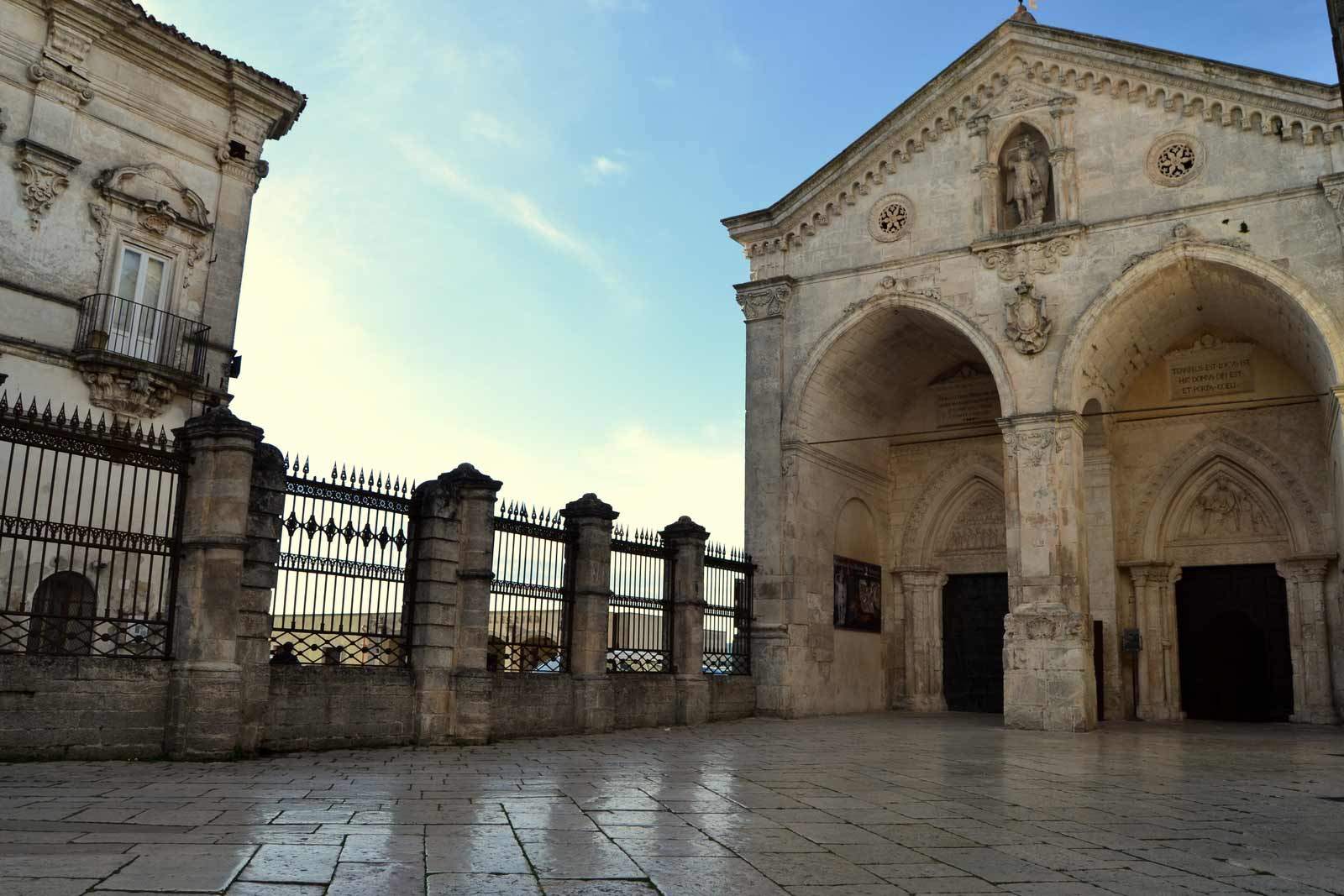 |
| The Sanctuary of St. Michael in Monte Sant’Angelo. Ph. Credit Sanctuary San Michele |
2. Gravina in Puglia
The modern city today has more than forty thousand inhabitants, but its historic center, which lies above a limestone bank near the border with Basilicata in the Murgia region, has much to tell. An area of Paleolithic settlements, Gravina was a Greek city, then Roman, and then occupied by the barbarians who descended into Italy. In the Middle Ages it was Longobard, Norman, Angevin, and from 1310 to 1816 it was a fief of the Orsini family. The Cathedral of Santa Maria Assunta is the main building of worship in the city, and a special feature of the place are the rock churches, such as that of St. Andrew: these are churches carved directly into the rock. Another bizarre building of worship, unique in the world, is the shrine of Our Lady of Grace, which has a facade in the shape of a noble coat of arms: in fact, it reproduces the coat of arms of the family of the prelate who had it built, Bishop Vincenzo Giustiniani. The Swabian Castle was commissioned by Frederick II (who not far from here had the arcane Castel del Monte built). The city’s history and art are also guarded by its four museums: the Archaeological Civic Museum, the Capitular Museum of Sacred Art, the Museo Laboratorio della Civiltà Contadina e degli Antichi Mestieri, and the Ettore Pomarici Santomasi Foundation Museum.
 |
| View of Gravina in Puglia |
3. Pietramontecorvino
It is located in the Daunia Mountains, near the border with Molise, and probably has origins in the early Middle Ages. It was Norman for a long time, then became Angevin and a fief of several families. The historic center is known as “Terravecchia” and is a well-preserved medieval village, which is characterized by tuff houses carved directly into the rock. The symbol of the village is the Norman Tower, square and almost twenty-five meters high. The mother church dates from the 14th century, while the symbol of local power is the Ducal Palace, of which, however, we do not know with certainty the date of its construction.
 |
| View of Pietramontecorvino |
4. Presicce
Located in the Lecce plain, Presicce is almost a Lecce “in piccolo,” thanks to the many Baroque buildings that can be admired here, starting with the mother church of Sant’Andrea Apostolo, built in the late 1700s on the remains of an older temple that collapsed during the 1743 earthquake, and continuing with the Arditi chapel and the many noble palaces in the center. Presicce is also a center famous for oil production: famous are its underground oil mills, also known as “trappeti,” built underground. The Ducal Palace (of Norman origin, remodeled until the 20th century) houses the Museum of Peasant Civilization.
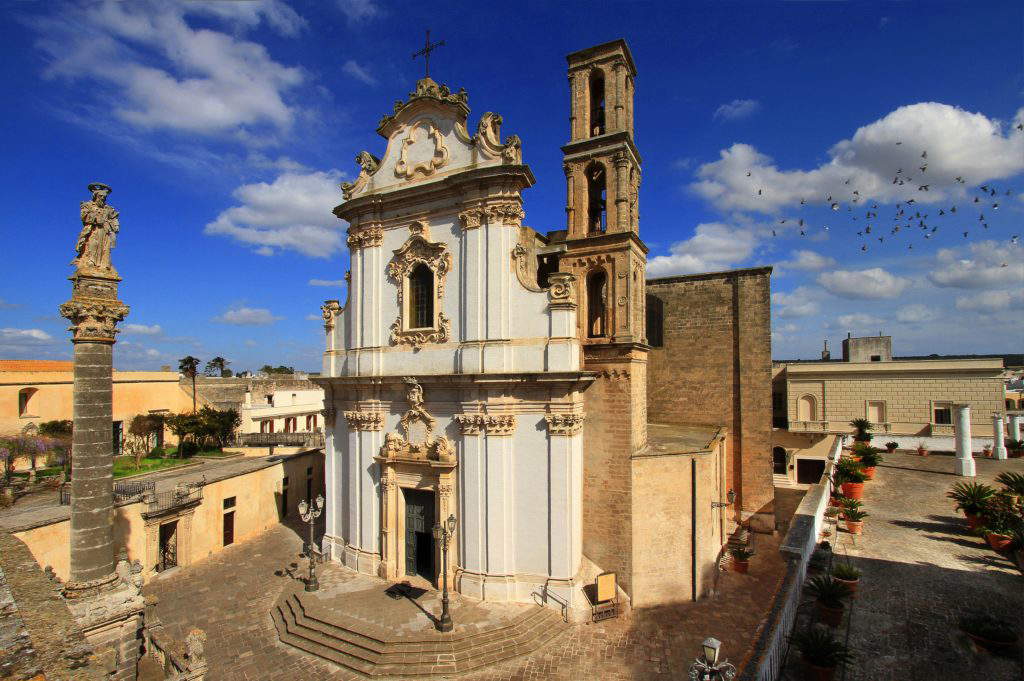 |
| Presicce, the church of Sant’Andrea Apostolo. |
5. Vico del Gargano
It rises in the northern part of the Gargano promontory, in the heart of the National Park, in an area inhabited since prehistoric times. Vico is first mentioned, however, in 1113: at that time, it was conquered by the Normans, who built a fortress here, which is still visible, although enlarged and rebuilt over time. It was therefore a fief of different families over the centuries. As in many places in the Gargano (and in Apulia in general), churches abound in Vico: the oldest is the Chiesa matrice. There is also a singular...Florentine building in the hamlet: it is the Palazzo Della Bella, commissioned in the early 20th century by a nobleman, Ignazio Della Bella, who wanted a residence reminiscent of Palazzo Vecchio in Florence, given the prevailing neo-Gothic taste at the time. In the seaside hamlet of San Menaio, known for its long beaches that lie beyond the coastal pine forests, is the Torre dei Preposti: a 14th-century fortress that had the dual function of defense system and customs house. Finally, Vico del Gargano is known for its delicious oranges, typical of the area.
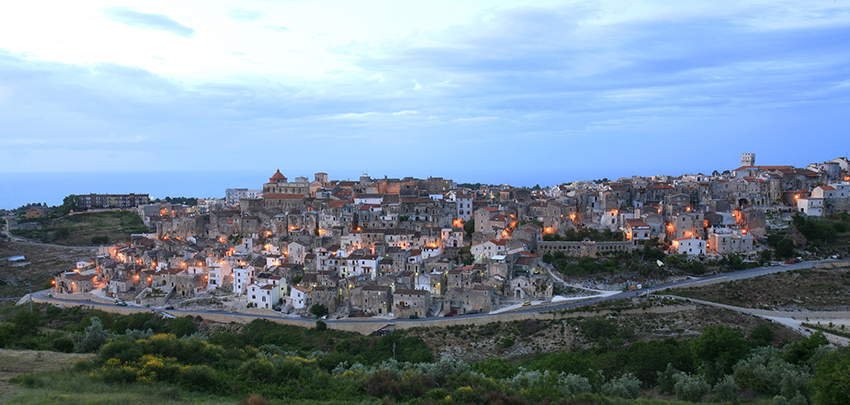 |
| View of Vico del Gargano. Ph. Credit Carlos Solito |
6. Alberona
A village of just nine hundred inhabitants in the Dauni Mountains, Alberona is situated on the slopes of Mount Stillo and has medieval origins, and was founded around the year one thousand. Like many villages in this area, it was subject to several dominations: that of the Normans, the Swabians, the Angevins, and was finally of the kingdom of Naples. It was also controlled for a long time by the Knights Templar, which is why some evidence of their presence remains in the village. The historic center is characterized by houses made of stones and white stone and is gathered around the 12th-century Prior’s Tower, an ancient Templar fort and later the seat of the Grand Prior of the Order of the Knights of Malta of Barletta: today, however, it is home to the local branch of Italia Nostra. A visit to the center then includes the church of San Rocco, with its neo-Gothic forms, the Mother Church, also built by the Templars, and the Antiquarium Museum. From the Arch of the Thousand there is a view of the surrounding area.
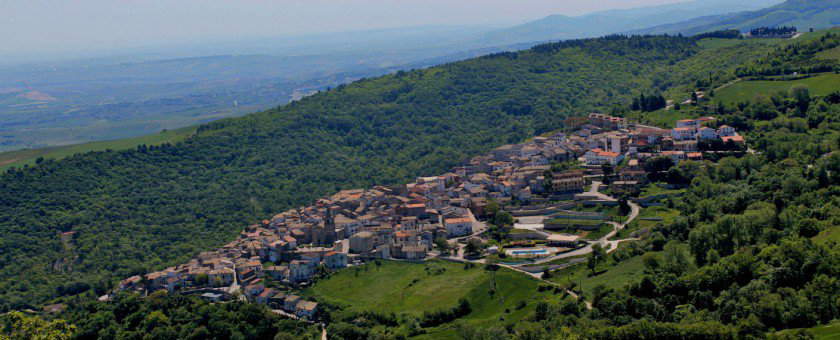 |
| View of Alberona. Ph. Credit |
7. Cisternino
It is located in an area inhabited since prehistoric times, although the present village is first mentioned in 1180 as Cisturninum: the place-name has nothing to do with cisterns and the like, but seems to derive from the legend that Sturnoi, Diomedes’ companion in the Trojan War, founded the town. In Roman times it is mentioned as Sturninum, while the name Cisturninum is said to derive from that of an abbey (St. Nicholas Cis Sturninum, that is, “on this side of Sturninum”) founded on the site where the mother church stands today. In the Middle Ages it was for a long time the seat of a barony, and between the 15th and 16th centuries it also had a Venetian interlude: the Serenissima, in fact, conquered it in 1495 as part of a policy of expansionism that included the conquest of some Apulian ports, but had to cede it in 1528 to the Spanish. The center is characterized by its white buildings, and a symbol of the town is the seventeen-meter-high Torre di Porta Grande, the ancient entrance to the town. The mother church, dedicated to St. Nicholas, is 14th-century. Finally, outside the built-up area stands the sanctuary of the Madonna d’Ibernia: according to legend, it was founded after an apparition of the Madonna, who supposedly indicated the place where to erect it.
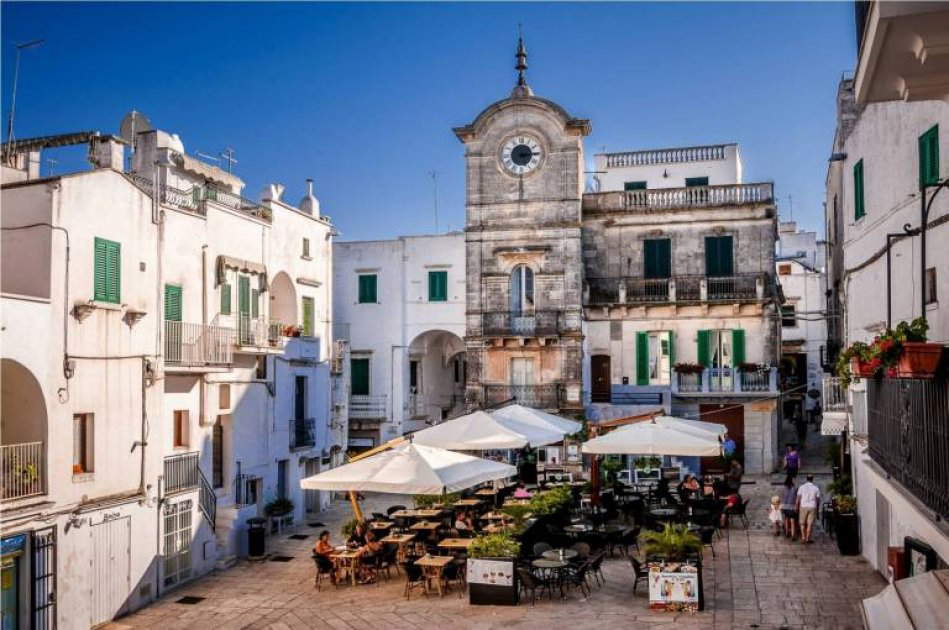 |
| The central square of Cisternino |
8. Locorotondo
It was founded around the year 1000 and the name of the town derives from its shape: in fact, the houses are arranged on a hill in concentric circles(Locus Rotundus, meaning “round place”). Tradition has it that the town developed thanks to a miracle by St. George: the main church in the village, built in the late 18th century, is dedicated to the saint. By contrast, the church of the Madonna della Greca, first mentioned in the 16th century, is older. Locorotondo is also the place of production of the doc wine of the same name.
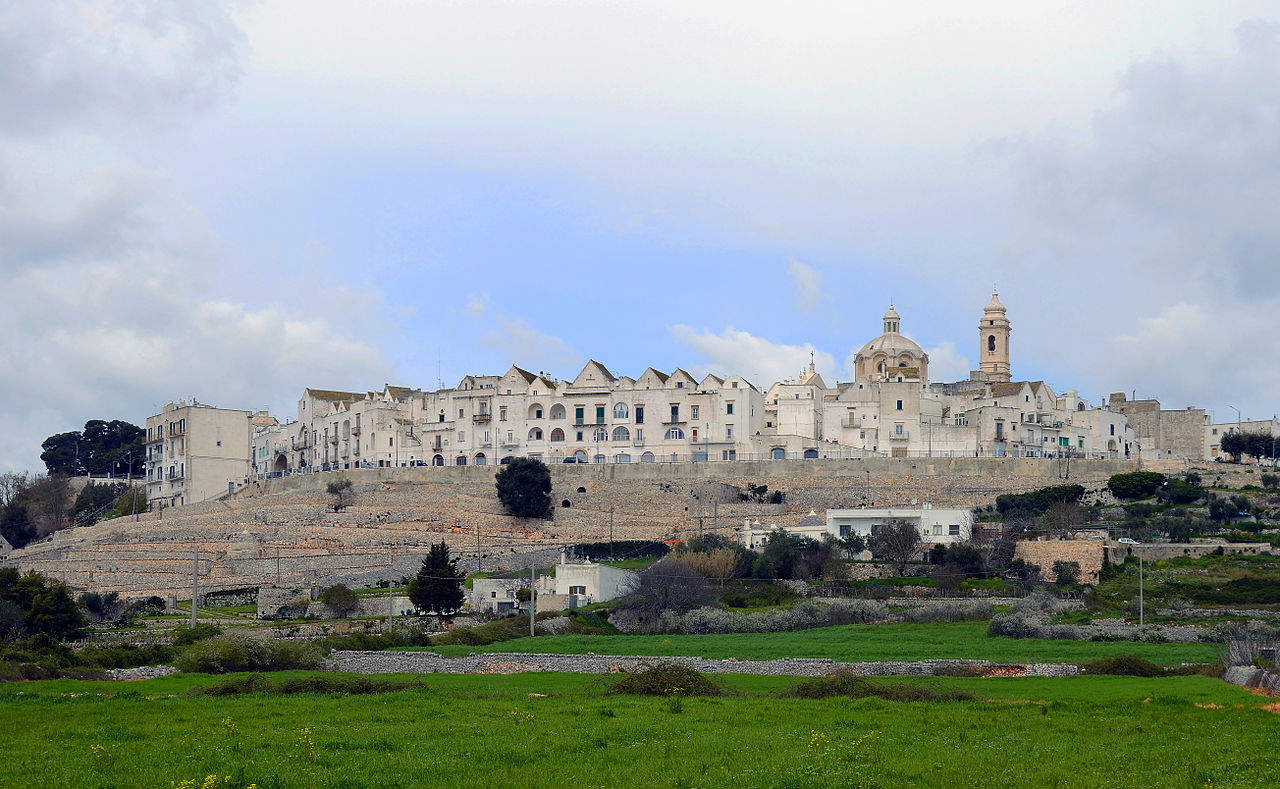 |
| View of Locorotondo. Ph. Credit |
9. Peschici
Best known as a seaside resort in one of the most beautiful areas of the Gargano, Peschici is also a village with a long history, the first records of which date back to the 10th century: an ancient Slavic colony (the root “pés” in Slavic languages means sand), it depended in the Middle Ages on Monte Sant’Angelo, and was then Swabian and Aragonese. The village is dotted with coastal towers that had sighting functions, located in strategic positions. Along the streets of the center one comes across monuments such as the Byzantine Castle, the abbey of Santa Maria di Calena (built in the 9th century), and the 13th-century church of Sant’Elia.
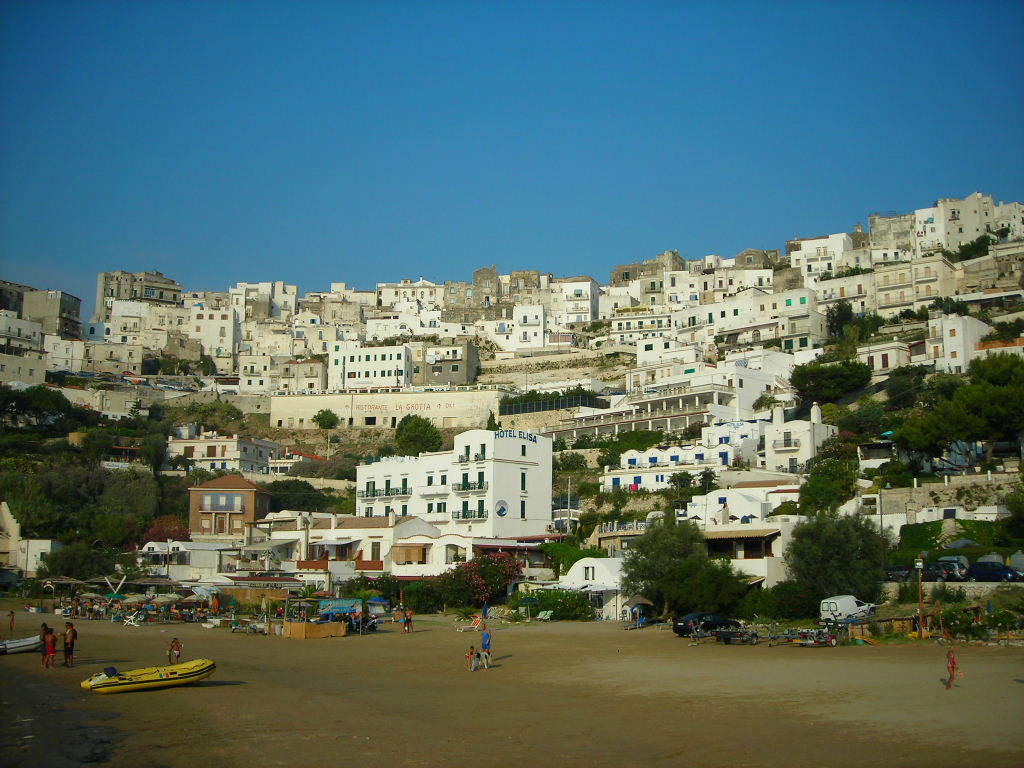 |
| View of Peschici. Ph. Credit |
10. Polignano a Mare
The town of Polignano a Mare already existed in ancient times, as attested by the numerous artifacts found here, but the town did not develop until the Normans, in the 12th century, and under the Angevins it grew in commercial importance. Between the 15th and 16th centuries it was Venetian, like several coastal towns, and then returned to Spanish rule. Polignano’s strategic and commercial importance did not diminish even later and allowed the town to flourish. Its center of white houses has entered the collective imagination as a typical “photograph” of Apulia’s coastal towns: walking through the town, one finds the mother church of Santa Maria Assunta (where a polyptych by Bartolomeo Vivarini is preserved), the 17th-century church of Sant’Antonio, the neoclassical-style church of Saints Cosma and Damiano, and the very ancient abbey of San Vito, founded in the 10th century. Polignano a Mare is also the birthplace of one of the greatest Italian artists of the 20th century, Pino Pascali: an important museum is dedicated to him.
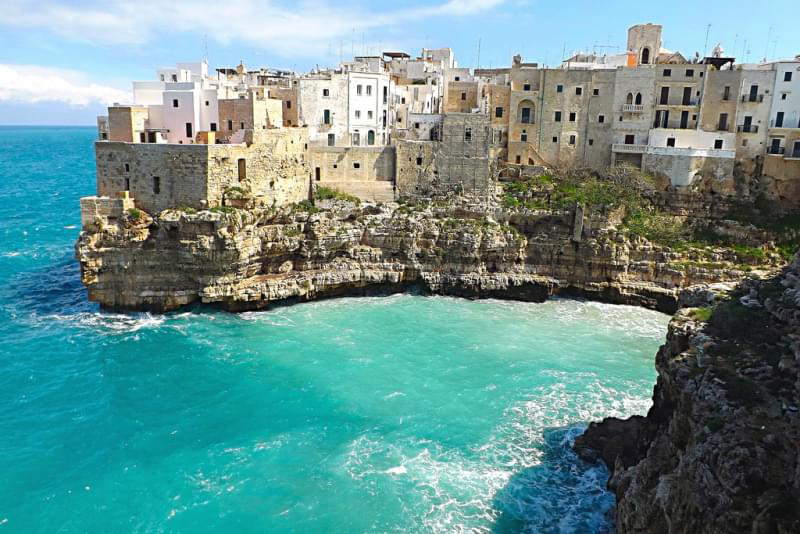 |
| View of Polignano a Mare |
 |
| Ten villages to visit in Puglia |
Warning: the translation into English of the original Italian article was created using automatic tools. We undertake to review all articles, but we do not guarantee the total absence of inaccuracies in the translation due to the program. You can find the original by clicking on the ITA button. If you find any mistake,please contact us.